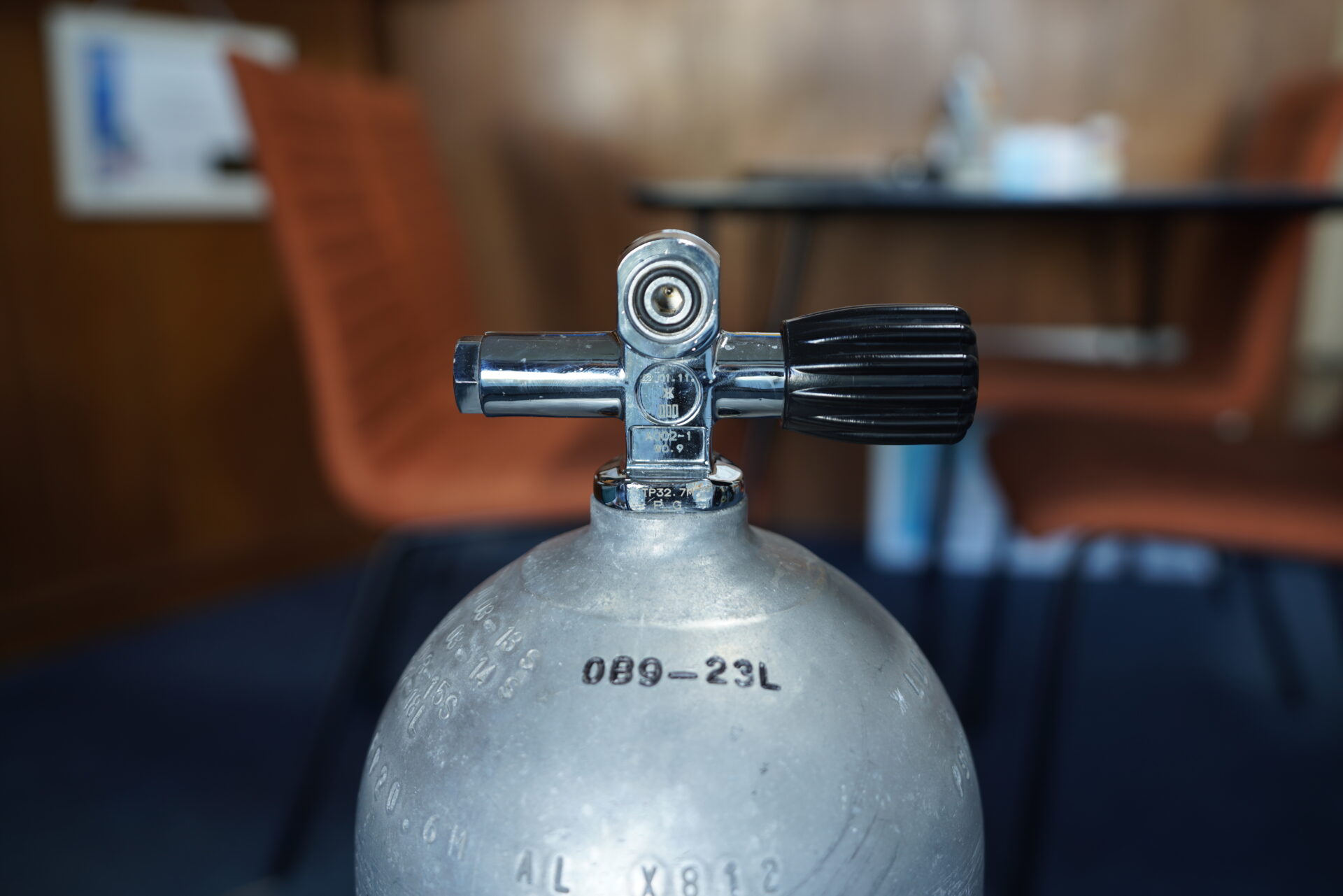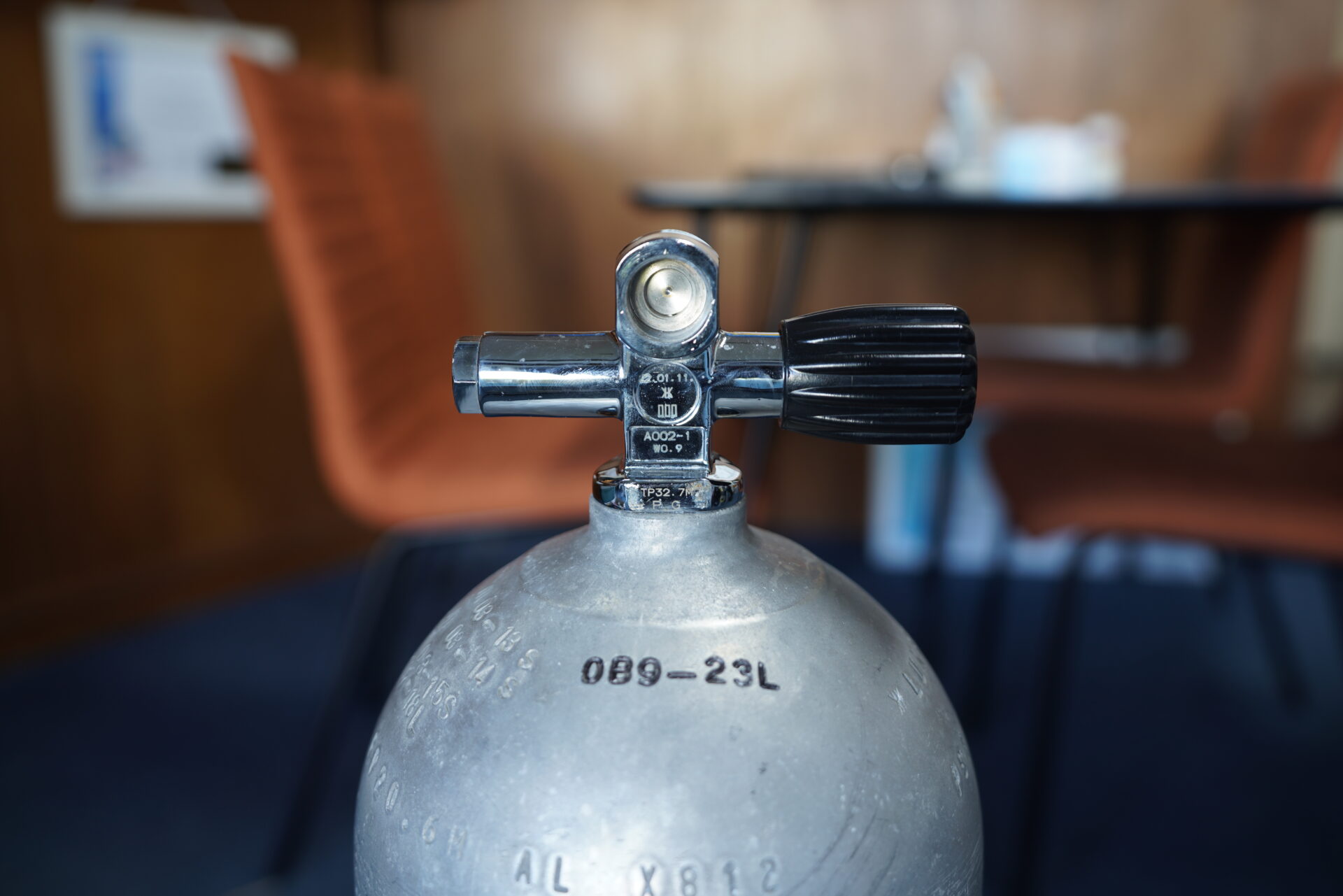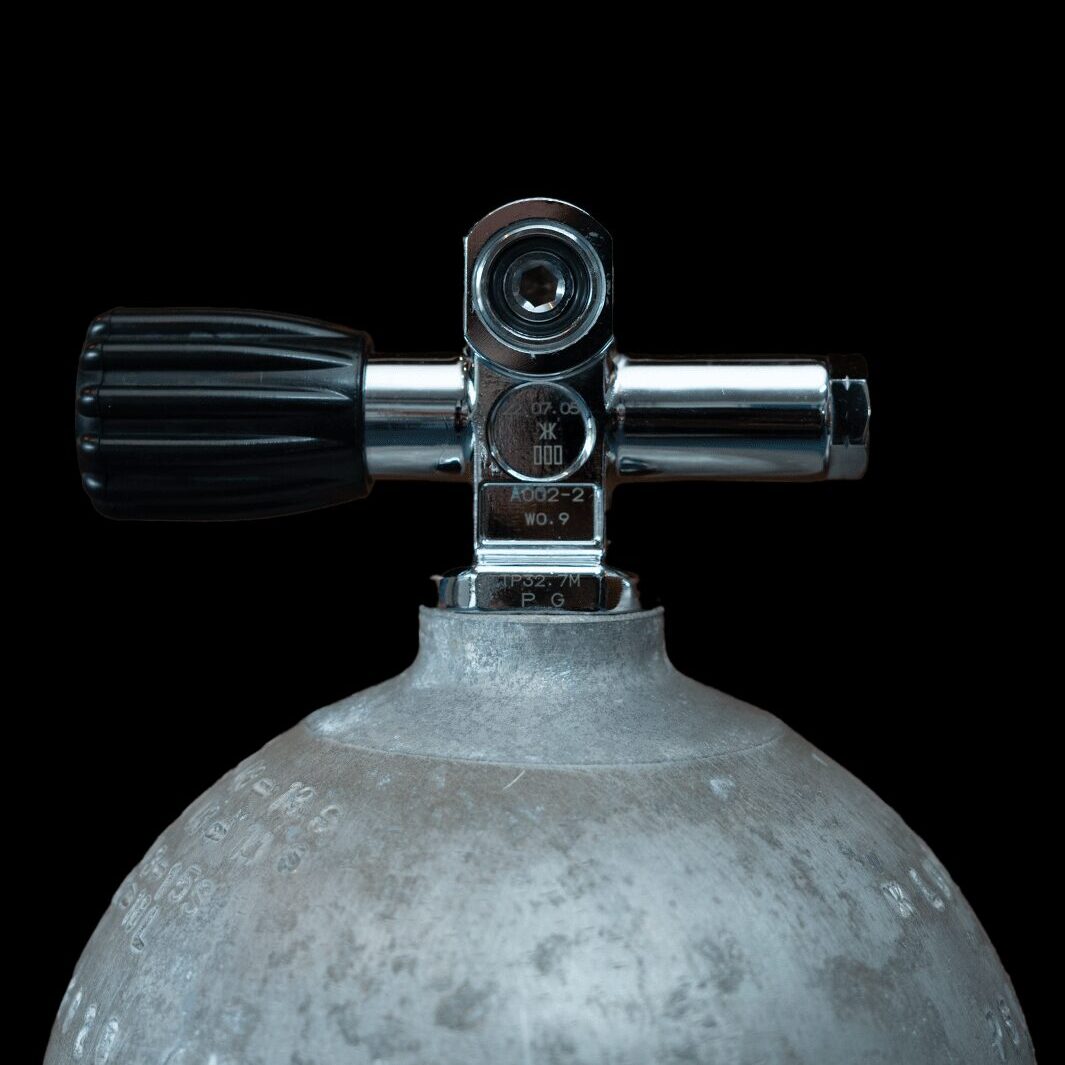What's DIN valve
The DIN valve has a threaded connection that screws directly into the tank's valve opening, providing a secure and airtight connection. It is known for its robust construction and is often preferred by technical divers and those using higher-pressure cylinders.
One of the key features of the DIN valve is its ability to handle higher tank pressures, making it suitable for use with enriched air nitrox and other gas mixtures used in technical diving. It offers a more reliable seal, reducing the risk of leaks, and is generally considered more secure than the yoke-style valve.
It's important for divers to match their regulator to the type of valve on the tank. If a diver is using a DIN regulator, they can connect it directly to a DIN valve. However, if they have a yoke (A-clamp) regulator, they will need a DIN-to-yoke adapter to connect to a DIN valve.
In summary, the DIN valve is a specific type of scuba tank valve designed for a secure and high-pressure connection to a regulator, commonly used in various diving environments, particularly in technical and advanced diving scenarios.
The DIN valve, in the context of scuba diving, originated from the Deutsches Institut für Normung (DIN), which translates to the German Institute for Standardization. DIN is a German organization that develops and sets technical standards for various industries, including manufacturing, engineering, and technology.


So, the origin of the DIN valve is rooted in the standardization efforts of the Deutsches Institut für Normung in Germany, where it was developed to enhance the safety and reliability of scuba diving equipment.
DIVE GEAR ONLINE SHOP

DIN VALVE WITH INSERT (KHK) RIGHT HAND FOR AIR
41,800 JPY
Whether a diver is just starting out or seeking a new underwater adventure, the Suunto Zoop Novo meets all needs. The large, clear, backlit display shows key dive data in an easy-to-read format, allowing divers to fully enjoy a great diving experience. This easy-to-use dive computer features full decompression capabilities, five dive modes (Air, Nitrox, Gauge, Free, and Off), and an easy-to-understand menu-based Suunto user interface

